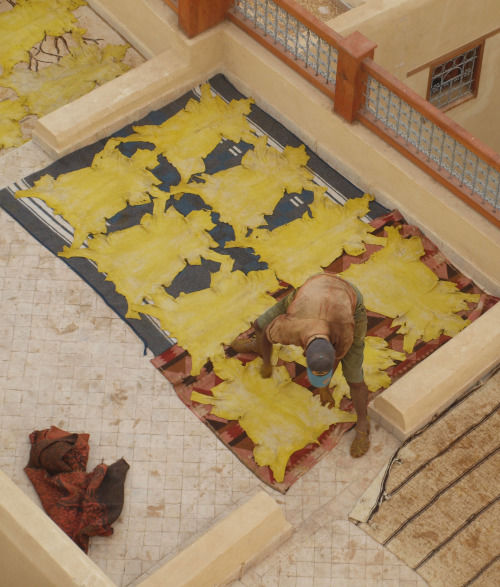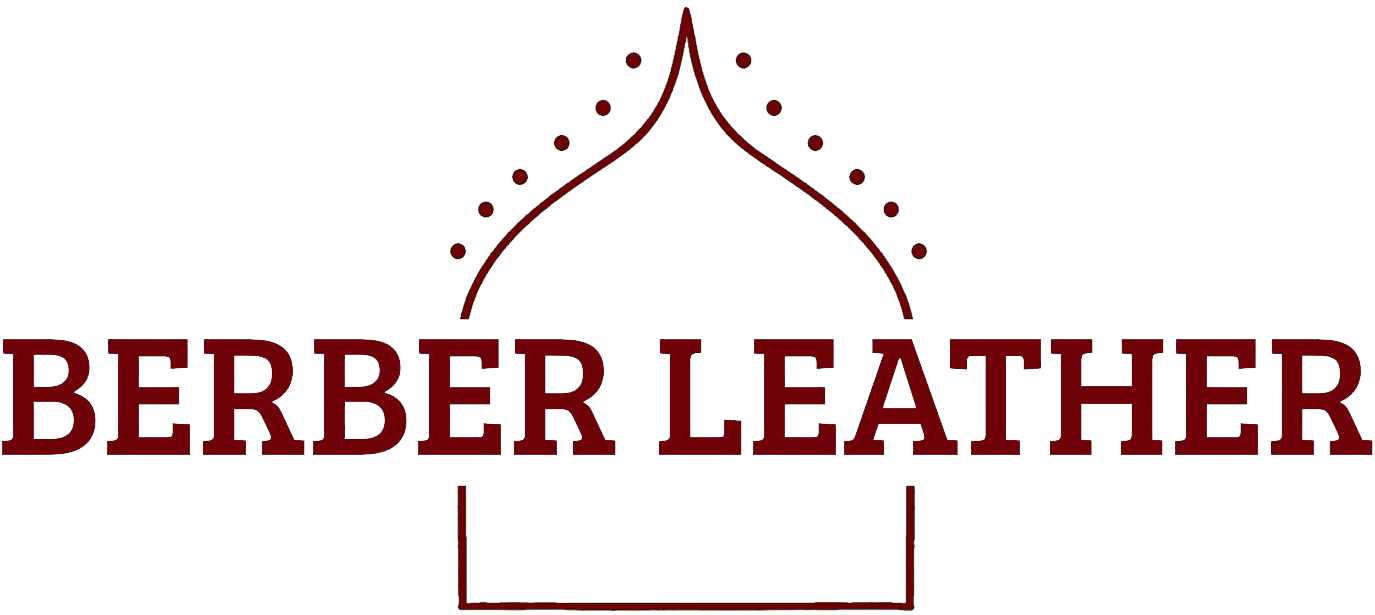Leather Production
The Leather
All Berber Leather products are made using Full Grain Leather. Full Grain Leather is the part of the hide just below the hair, and is the highest quality grain of leather that you can get, even more so than Top-Grain Leather. Full-Grain leather uses all of the grain of the leather, and all of its natural markings, unlike Top-Grain Leather which sands some of these markings away. Whereas Top-Grain Leather will have a more uniform finish, Full Grain Leather showcases all the natural markings from the hide, which can include nicks and marks from the animals' life and part of what we love, and consider this character a unique factor in every Berber Leather Product.
Full Grain Leather is a lot more durable than any other leather on the market and as it ages it will create a beautiful patina, meaning that in years to come your bag will look even better than the day it arrived! For more information about how to keep your Berber Leather product looking its' best visit our Leather Care page.
The Tanning
The leather used in Berber Leather products are tanned in either Marrakech or Fes in a natural process that is centuries old. This is all achieved manually, without the need for modern machinery, and the process has barely changed since medieval times. The tanners only use 100% natural resources and no artificial products or chemicals. In the first part of the process, hides are soaked in vats containing a mixture of quicklime, wheat bran, water and salt. This caustic mixture helps to break down the tough leather and loosen any excess fat and hair that remains on them. After two to three days, the hides are then soaked in another set of vats of natural products, including the bark from mimosas, oaks and tamaris. These act as softening agents and allow the hides to become malleable so they can absorb the dye. The tanner uses his bare feet to knead the hides for up to three hours to achieve the desired softness.

The hides are then placed in dyeing pits containing natural vegetable dyes, such as poppy flower (red), indigo (blue), henna (orange), cedarwood (brown), mint (green), and saffron (yellow). Other natural materials used for dyeing include pomegranate powder, which is rubbed on the hides to turn them yellow, and olive oil, to give them a natural shine. Once the leather is dyed it is taken out to dry under the sun on the rooftops surrounding the tanneries or the local hillsides.
Bag Production
Berber Leather work with master craftsmen in Marrakech and Fes to produce the beautiful products that you can see on our website and in our shop. We have selected these partners to work with because we believe by working alongside them we can bring the best product possible to you. We also like the fact that our small UK business can work with other small Moroccan businesses, and that by purchasing their products we are supporting their families and livelihoods. We go out to Morocco regularly to make sure our relationship with these partners is kept strong, and also to work with them on any new products we wish to bring to market whilst still keeping the feel of Moroccan heritage that they can bring to all of our items.






